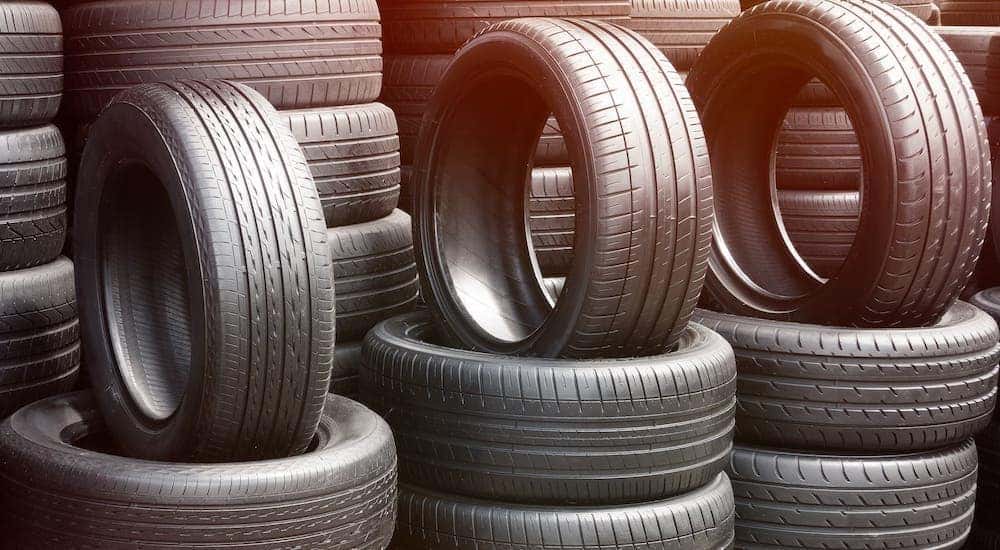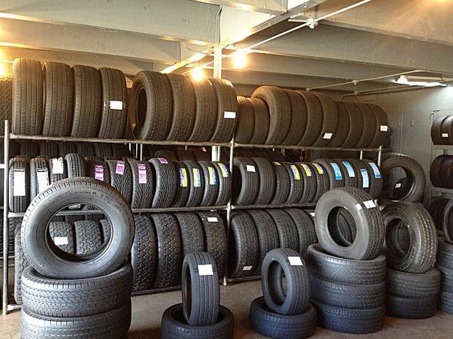Browse Safely with Tire Tracks Morris IL: Premier Tire Shop Near Me
Browse Safely with Tire Tracks Morris IL: Premier Tire Shop Near Me
Blog Article
The Science Behind Tire Repair Service and Security
When it comes to the elaborate world of tire upkeep and safety and security, there exists a world of scientific research that commonly stays hidden by the typical chauffeur - morris tire service. The materials that compose a tire, the impact of tire stress on overall safety and security, the implications of walk wear, the complex characteristics of tire traction, and the often-overlooked relevance of proper wheel alignment all play important functions in making sure an automobile operates safely and effectively. As we navigate through the complexities of tire repair work and safety, it comes to be obvious that a much deeper understanding of these clinical principles is not only helpful yet necessary for every single chauffeur when driving
Tire Composition and Performance
What products make up the composition of tires, and just how do these elements add to their functionality when traveling? Tires are intricate items, usually made from a combination of rubber compounds, material, steel cords, and various other chemical additives. The most common type of rubber made use of in tires is artificial rubber, which provides resilience and resistance to tear and wear. The fabric layers, commonly constructed from polyester, rayon, or nylon, supply strength and security to the tire structure. Steel cables are integrated to boost the tire's stamina and help it keep its form under different roadway problems.
The rubber compounds supply grasp and traction, allowing the tire to stick to the roadway surface and provide security during acceleration, braking, and cornering. Generally, the mindful option and combination of these products ensure that tires can carry out effectively and safely on various roadway surfaces and problems.
Influence of Tire Pressure on Safety And Security
Preserving appropriate tire pressure is vital for making certain optimal security and performance while driving. The effect of tire stress on safety and security can not be overemphasized. Underinflated tires are susceptible to overheating, which can bring about tire blowouts, especially at high speeds. In addition, low tire pressure affects the handling and responsiveness of the lorry, raising the threat of accidents, especially during emergency maneuvers. On the other hand, overinflated tires have less call with the roadway surface, lowering traction and creating unequal endure the tire treads. This endangers the lorry's stability and braking effectiveness, posing a significant security hazard. Appropriately filled with air tires also play a crucial function in gas effectiveness, as underinflated tires can boost moving resistance, resulting in lowered gas mileage. On a regular basis inspecting and maintaining the proper tire pressure not only guarantees safety and security yet likewise expands the life-span of the tires, conserving on replacement prices in the lengthy run.
Footstep Put On and Its Ramifications
Proper monitoring of tire step wear is vital for ensuring optimum performance and safety and security on the road. As tires use down, the deepness of the step reduces, minimizing the tire's capability to preserve traction, particularly in slippery or damp problems. The walk pattern and depth play an important role in transporting water far from the tire to protect against hydroplaning and preserving grasp on the road surface area.
Unequal wear might recommend concerns with tire suspension, positioning, or rising cost of living components. Put on indications are constructed into the tire walk and end up being noticeable when the step depth reaches a particular reduced factor, suggesting the need for immediate replacement.

Comprehending Tire Traction Characteristics
Monitoring tire tread wear not only ensures optimal efficiency and safety and security however additionally directly influences the grip dynamics of the tires on different roadway surface areas. Tire traction is a crucial facet of vehicle handling and security, as it determines the hold between the tires and the roadway. Grip characteristics differ depending on road problems such as dry sidewalk, damp roadways, snow, or ice.

Recognizing tire grip dynamics is crucial for vehicle drivers to adjust their driving actions according to the roadway problems. morris tire service. On a regular basis inspecting tire tread deepness and condition can significantly boost grip efficiency, guaranteeing safer driving sites experiences across different surface areas
Relevance of Correct Wheel Placement
Ensuring proper wheel alignment plays a crucial role in maximizing automobile performance and prolonging tire longevity. Appropriate wheel alignment involves readjusting the angles of the wheels to manufacturer specs, making certain that they are vertical to the ground and alongside each other. When placement is off, it can cause unequal tire wear, lowered fuel effectiveness, and jeopardized handling.
Among the vital benefits of maintaining appropriate wheel positioning is improved managing and stability. Misaligned wheels can create the car to draw to one side, influencing steering control and total driving experience. Furthermore, proper placement promotes even tire wear, protecting against early tire substitute and minimizing maintenance prices in the lengthy run.

Conclusion
In verdict, the scientific research behind tire fixing and safety is critical for preserving automobile performance and guaranteeing vehicle driver safety. By understanding tire composition, stress, tread wear, grip characteristics, and wheel positioning, chauffeurs can protect against accidents and extend the life-span of their tires. Proper maintenance and normal examinations are essential for optimum tire efficiency and general automobile safety and security. By complying with these standards, chauffeurs can Web Site drive with confidence knowing that their tires remain in good problem.
The products that compose a tire, the influence of tire stress on general safety, the effects of step wear, the intricate characteristics of tire grip, and the often-overlooked value of proper wheel placement all play important functions in guaranteeing a vehicle operates securely and effectively. On the other hand, overinflated tires have much less call with the roadway surface, lowering grip and causing unequal wear on the tire treads. Regularly inspecting and original site keeping the right tire pressure not just ensures security but likewise extends the lifespan of the tires, saving on substitute costs in the long run.
Monitoring tire tread wear not only makes certain optimal efficiency and safety yet additionally straight impacts the traction dynamics of the tires on various roadway surface areas. Tire traction is a critical facet of automobile handling and safety, as it establishes the hold in between the tires and the roadway.
Report this page